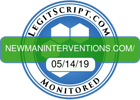OPIOID FAQs
What are the best treatment options for opioid pain medication drug addiction?
Anyone who is taking opioids is at risk of developing an addiction. These drugs are responsible for a large percentage of drug addiction problems in the United States. Opioids trigger the release of endorphins, which is within your brain’s reward center and provides the feel-good feeling that becomes addictive. Most of the pain medication addiction problems in the nation start with a prescription and then progress into further problems. There are steps that someone can take to avoid becoming addicted to opioids. Pain medication is safest when used for three or fewer days, and most prescribing doctors inform patients only to take the drug as needed. However, there are many Americans who are struggling with chronic pain and rely on pain medication daily. One way to help prevent addiction in your family and within the community is by safeguarding opioids while you use them and disposing of unused opioids properly.
If you do become addicted to or dependent on opioid pain medication, there some treatment options to consider. One standard treatment option most opioids addicts choose is medication-assisted treatment. Opioid treatment programs operate throughout the United States and provide specific treatment to people addicted to pain medication. The programs use a combination of medication and therapy to help opioid addicts overcome addiction. The standard medication used includes buprenorphine, suboxone, and methadone. Buprenorphine is often used during withdrawal and works to ease withdrawal pain and control cravings for opioids. During therapy, some addicts are prescribed suboxone to help them manage cravings. Medication-assisted therapy is only effective when done with behavioral counseling or some form of traditional therapy. These are inpatient treatment services, and the patient will stay at the facility during his or her treatment.
Medical detox programs or hospital inpatient treatment are effective solutions for opioid addiction. A medically supervised detox program provides around the clock medical supervision. The withdrawal process is managed with medication to help stabilize the addict. The purpose of medical detox is to help the patient make a smooth transition into a drug treatment program. Opioid withdrawal is challenging to go through, and proper detox is crucial to avoid relapse. It is not recommended that an opioid addict attempts to detox on their own without any help. Following successful detox counseling and behavioral therapies help addicts work through the underlying issues of the addiction. Residential drug rehab is the most effective because a patient lives at the center during treatment. Inpatient programs provide better results because everything is offered in-house and a patient can focus on treatment distraction-free.
Opioid Addiction Family Intervention
Across the country are various rehabilitation options for opioid addicts. Rehabilitation is essential because of the high risk of overdose. According to the Centers for Disease Control and Prevention, drug overdose deaths in the United States rose 4.6% in 2019 to 70,980, including 50,042. Many families have to organize a family intervention to help their loved ones. An intervention can motivate an addict to seek help for their opioid addiction. It is not easy to help someone struggling with addiction, but intervention is a focused approach, and with the help of a professional interventionist, the process is successful.
Someone struggling with opioid addiction is often in denial about their situation and is unwilling to seek treatment. Addicts do not recognize the negative effects their behavior has on themselves and others. A family intervention presents the addict with a structured opportunity to make changes before things get even worse. An intervention is a carefully planned process and provides specific examples of destructive behaviors and the impact on the family and addict. Also, it offers a prearranged treatment plan with clear steps, goals, and guidelines.
Family intervention is usually a two-day process, and the first day is spent with the family planning the intervention. Everything is planned, and everyone involved with the intervention has something specific to say. Family interventions are also rehearsed before the intervention. The purpose of an intervention is not to place blame or point the finger, but to persuade the addict they need help. However, the addict has only two choices, which are to seek help or face the consequences of not accepting help. Tough love is effective, and a professional interventionist does help make the process easier to manage.
Sources-https://www.aha.org/news/headline/2020-07-16-cdc-drug-overdose-deaths-46-2019
Opioid Addiction Rehabilitation
According to the 2019 National Survey on Drug Use and Health, among people aged 12 or older in 2019. 3.7% or 10.1 million people misused opioids in the past year. Most people who misused opioids in the past year abused prescription pain medication. Rehabilitation programs are important to prevent overdose and help people maintain a sober life. Countless opioid addicts struggle with relapse because they do not have access to the treatment they need. Rehabilitation should be well-rounded, and it begins with medical detox, residential rehabilitation, and aftercare support.
Opioid addiction does not have to be a life-long struggle, and with proper treatment,opioid addicts overcome their addiction. Aftercare support is an important part of treatment, and this includes peer support groups, twelve-step meetings, outpatient treatment, and individual counseling. Aftercare programs help recovering addicts maintain sobriety and continue to improve their lives and achieve their goals. Aftercare support also helps with relapse prevention and avoiding situations where relapse could occur.
Saving a Life Starts Here
Learn more about our method for successful intervention. Contact us today for a free, confidential consultation with an Intervention Counselor.
Please fill out the form and download your copy of the 25 tips for Successful Intervention




